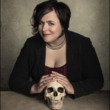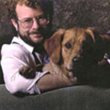Bellevue: Three Centuries of Medicine and Mayhem at America's Most Storied Hospital
(Libby/OverDrive eBook, Kindle)
Available Platforms
Description
Excerpt
Similar Titles From NoveList
Similar Authors From NoveList
Published Reviews
Booklist Review
*Starred Review* In his impressive biography of Bellevue Hospital, historian Oshinsky (Polio: An American Story, 2005) writes about much more than a building. He splendidly captures the essence of a nearly 300-year-old institution and its resolute commitment to serving those in need (especially immigrants and the poor). He infuses his account with the history of American medicine, the growing pains of New York City, and a cadre of captivating and calamitous characters. Established in 1736, Bellevue began as an almshouse and pesthouse. It is the nation's oldest and largest public hospital. Bellevue is branded in American culture in film (The Lost Weekend); in its roster of notable patients (Sylvia Plath, Stephen Foster, O. Henry, Charlie Parker); and in exposé (Nelly Bly's Ten Days in a Mad-House). Despite its many contributions to medical education, research, public health, and clinical care, Bellevue in the minds of most seems inescapably linked to uproar and insanity. Yet it was the first American hospital to establish a nursing school for women, an ambulance fleet, a maternity ward, and a forensic-medicine lab. Oshinsky pulls no punches. Bellevue is far from a perfect place. But his main message is in sync with the hospital's mission of providing care for all: When others flinched or turned their backs, Bellevue stayed the course. --Miksanek, Tony Copyright 2016 Booklist
Publisher's Weekly Review
Oshinsky, professor of history at NYU and Pulitzer-winner for Polio: An American Story, positions Bellevue as "a microcosm of the city it serves," tracing its development from its hazy 17th-century origins as a Dutch infirmary to its emergence as a 21st-century cultural fixture. Bellevue's mission of providing free care to the destitute means every epidemic and wave of immigration to reach New York Harbor has passed through its doors. Oshinsky attempts to place Bellevue in dual context, plying medical and socioeconomic history. He struggles with the physicality and aura of this massive institution, which in 1816 added "an orphanage, a morgue, a pest house, a prison, and a lunatic asylum" to its almshouse and infirmary. By the 1950s it had expanded to include 84 wards over five city blocks. Its medical and psychiatric practices have been vehemently criticized, and its political battles have been ruthless. As a result, the chapters overflow with background and sometimes read like scrambled-together lectures. Oshinsky often shortchanges his fascinating subject while discoursing into fascinating, if tangential, asides. When he stays on task, he focuses on a handful of elite physicians-William Hammond, Stephen Smith, Edith Lincoln, Saul Farber-while the bulk of Bellevue's lifeblood goes unchronicled. Despite Bellevue's rich history, the narrative doesn't truly cohere. (Nov.) © Copyright PWxyz, LLC. All rights reserved.
Library Journal Review
Evolving from an early 1700s almshouse to a 21st-century public charitable hospital, Bellevue is frequently in the news for its charitable mission and excellent trauma center. Sometimes referred to as "the hospital of last resort" by New Yorkers, Bellevue also has a history of taking the lead in numerous medical innovations including the first civilian ambulance service, the first female nursing school, the first outpatient clinics, pioneering surgery and medical research, and the first to create individual departments for psychiatry, pediatrics, and radiology. In a fascinating, fact-filled, and entertaining story, Oshinsky (Polio: An American Story) traces Bellevue's history, its relationship to New York City's development, and the advancement of American medicine. Actor Fred Sanders (The Buddy Holly Story) holds listeners' attention in his emotive and nicely paced narration. VERDICT Will be of interest to premed and medical students, those involved in the history of medicine, or curious about Bellevue's history and connection to New York City. ["This readable, smoothly flowing, and well-documented account should fascinate": LJ 9/1/16 review of the Doubleday hc.]-Laurie Selwyn, formerly with Grayson Cty. Law Lib., Sherman, TX © Copyright 2017. Library Journals LLC, a wholly owned subsidiary of Media Source, Inc. No redistribution permitted.
Kirkus Book Review
An eye-opening history of the Manhattan hospital whose name is a byword for asylums everywhere.If a person is taken to Bellevue, its never for good reasons. It is the hospital where sick homeless people, injured construction workers, and wounded cops and robbers come, scooped up from all over Manhattan, with elite wards for the elite and less-than-elite wards for the rest. In that sense, writes Pulitzer Prizewinning historian Oshinsky (History/New York Univ., and Medical Humanities/NYU School of Medicine; Polio: An American Story, 2010, etc.), Bellevue is a microcosm of the city it serves. It has made news for generations, in recent years for housing John Lennons assassin but also for having been the death place for Stephen Foster, O. Henry, and Lead Belly. That familiarity in the popular culture, notes the author, comes at a price, for though Bellevue has an ineradicable reputation, it is the definitive public hospital, treating rich and poor, attending to every conceivable malady, its doctors researching epidemics, ushering in public health reforms, and dispensing wisdom (Work and keep out of the easy chair.Dont eat too much meat). From the ER to the Insane Pavilion (Imagines Himself a MosquitoNow an Inmate at Bellevue, reads one headline of yore), Oshinskys account focuses on people. Anecdotal, its learning lightly worn, it makes a fine complement to the medical writing of Atul Gawande and Richard Selzer. It is also full of discoveries. For instance, it should come as no comfort to anyone that electroshock therapy, in which Bellevue was a pioneer, had its origins in the electrical stun guns used to stun pigs before they were slaughtered; it looks humane, Oshinsky suggests, only against other therapies such as lobotomy, and it was applied to thousands of patients, many of them children. A lively contribution to popular histories of New York and its institutions, worthy of shelving alongside Robert Caros The Power Broker and Edwin Burrows and Mike Wallaces Gotham. Copyright Kirkus Reviews, used with permission.
Booklist Reviews
*Starred Review* In his impressive biography of Bellevue Hospital, historian Oshinsky (Polio: An American Story, 2005) writes about much more than a building. He splendidly captures the essence of a nearly 300-year-old institution and its resolute commitment to serving those in need (especially immigrants and the poor). He infuses his account with the history of American medicine, the growing pains of New York City, and a cadre of captivating and calamitous characters. Established in 1736, Bellevue began as an almshouse and pesthouse. It is the nation's oldest and largest public hospital. Bellevue is branded in American culture—in film (The Lost Weekend); in its roster of notable patients (Sylvia Plath, Stephen Foster, O. Henry, Charlie Parker); and in exposé (Nelly Bly's Ten Days in a Mad-House). Despite its many contributions to medical education, research, public health, and clinical care, "Bellevue" in the minds of most seems inescapably linked to uproar and insanity. Yet it was the first American hospital to establish a nursing school for women, an ambulance fleet, a maternity ward, and a forensic-medicine lab. Oshinsky pulls no punches. Bellevue is far from a perfect place. But his main message is in sync with the hospital's mission of providing care for all: "When others flinched or turned their backs, Bellevue stayed the course." Copyright 2016 Booklist Reviews.
Library Journal Reviews
"It gathers the dead and dying from the rivers and streets and is kept busy night and day with the misery of the living." That early New York Times description of the city's Bellevue Hospital encapsulates its history and current incarnation, in the view of Oshinsky (history, New York Univ.; Polio: An American Story). From its 1736 beginnings as an almshouse with a one-room infirmary to the current 25-story, 1,200-bed version, where more than 600,000 patients are seen annually through emergency rooms and outpatient clinics, Bellevue has always served the underserved. As the largest public hospital in the nation's largest city, it has been at the forefront of dealing with such crises as yellow fever, cholera, smallpox, Civil War wounded, the Spanish flu, AIDS, 9/11, Hurricane Sandy, and the Ebola virus. Oshinsky places his story squarely in the history of American medicine and public health as well as of Bellevue itself. He takes numerous side trips into the personalities who have passed through, and the political and economic forces that have come to bear on the institution. VERDICT This readable, smoothly flowing, and well-documented account should fascinate readers with interests touching on all aspects of the history of medicine and the American health-care system.—Richard Maxwell, Porter Adventist Hosp. Lib., Denver. Copyright 2016 Library Journal.
Publishers Weekly Reviews
Oshinsky, professor of history at NYU and Pulitzer-winner for Polio: An American Story, positions Bellevue as "a microcosm of the city it serves," tracing its development from its hazy 17th-century origins as a Dutch infirmary to its emergence as a 21st-century cultural fixture. Bellevue's mission of providing free care to the destitute means every epidemic and wave of immigration to reach New York Harbor has passed through its doors. Oshinsky attempts to place Bellevue in dual context, plying medical and socioeconomic history. He struggles with the physicality and aura of this massive institution, which in 1816 added "an orphanage, a morgue, a pest house, a prison, and a lunatic asylum" to its almshouse and infirmary. By the 1950s it had expanded to include 84 wards over five city blocks. Its medical and psychiatric practices have been vehemently criticized, and its political battles have been ruthless. As a result, the chapters overflow with background and sometimes read like scrambled-together lectures. Oshinsky often shortchanges his fascinating subject while discoursing into fascinating, if tangential, asides. When he stays on task, he focuses on a handful of elite physicians—William Hammond, Stephen Smith, Edith Lincoln, Saul Farber—while the bulk of Bellevue's lifeblood goes unchronicled. Despite Bellevue's rich history, the narrative doesn't truly cohere. (Nov.)
[Page ]. Copyright 2016 PWxyz LLCReviews from GoodReads
Citations
Oshinsky, D. (2016). Bellevue: Three Centuries of Medicine and Mayhem at America's Most Storied Hospital . Knopf Doubleday Publishing Group.
Chicago / Turabian - Author Date Citation, 17th Edition (style guide)Oshinsky, David. 2016. Bellevue: Three Centuries of Medicine and Mayhem At America's Most Storied Hospital. Knopf Doubleday Publishing Group.
Chicago / Turabian - Humanities (Notes and Bibliography) Citation, 17th Edition (style guide)Oshinsky, David. Bellevue: Three Centuries of Medicine and Mayhem At America's Most Storied Hospital Knopf Doubleday Publishing Group, 2016.
Harvard Citation (style guide)Oshinsky, D. (2016). Bellevue: three centuries of medicine and mayhem at america's most storied hospital. Knopf Doubleday Publishing Group.
MLA Citation, 9th Edition (style guide)Oshinsky, David. Bellevue: Three Centuries of Medicine and Mayhem At America's Most Storied Hospital Knopf Doubleday Publishing Group, 2016.
Copy Details
| Collection | Owned | Available | Number of Holds |
|---|---|---|---|
| Libby | 1 | 0 | 0 |


































